By Lori Hanson
I cut my finger a couple of weeks ago while making salad. Not just a nick, it was about an inch long and fairly deeply. I had to hold it tight for about 10 minutes until it stopped bleeding. It’s my middle finger and the cut is just above the top third of my finger on the inside. A really sensitive place!
The first week is the worst. Trying to keep the band-aid dry in the shower so I didn’t have to change it and open the wound for a couple of days. Then holding it out-of-the-way and not bumping it on things to prevent pain. Holding a dumb bell when I worked out and typing were interesting for a few days.
Why am I blogging about the cut on my finger? I found it interesting that after I took the band aid off and got into week number two where it didn’t hurt so much (except when I smacked it) that without even thinking about it I was still holding it out-of-the-way. Think about this, in the matter of one day I was holding my finger out-of-the-way to prevent the pain of touching it on any thing.
I learned a new habit rapidly. And after it was on the mend and I really didn’t need to protect it so much I was still protecting it. I was following the new behavior without thinking about it.
This relates to life in several ways. #1 we have been conditioned to think habits are hard to break and #2 new habits hard to make. But look how quickly your body helps you adapt to avoid pain when you are hurt by keeping the finger, foot or limb out-of-the-way. Now once you are past the danger or pain the body is still protecting for us without having to think about it. That’s what I call being in default mode, on autopilot, or put more bluntly, not being in the moment or being aware of what is happening.
If we take this a step further and apply it to addiction whether drugs, alcohol, over eating, or addictive behaviors like eating disorders and look at the ways we deal with stress there is an interesting parallel. As I talk about regularly when I speak we use addictions and addictive behaviors to help us numb out to things we don’t want to deal with, feel we can’t handle or want to hide from. I know from over 30 years of experience with my bulimia. And sometimes we change the behavior or addiction and find victory only to discover a new one. I call it “The Whack-A-Mole Syndrome.”
What happens over time is we aren’t in the same scenario that once made us want to run and hide, or numb out. But by that time we are so vested in the habit and addiction it happens automatically and we don’t know how to make it stop. I talk with many individuals stuck in stressed out lifestyle that are actually addicted to the stress and drama. And many individuals with eating disorders can’t even fathom letting go of the habit.
So going back to the finger story, how do I stop holding the sore finger out and protecting it? By becoming aware that I’m doing it. I start to notice that hey, I’m holding my finger out while I’m brushing my teeth, but I don’t need to do that any more. So I start the new behavior of putting the finger down on the toothbrush, the dumb bells, the steering wheel, etc.
And although habits can be hard to break and addictions are complex, one of the first things that you can do to make a change is start being aware of what you’re doing. Watch when you are in your habit and start to look for what happens before you repeat the behavior. What leads you to it? What are you triggers? I have my clients journal what they feel both physically and emotionally when they eat. In dealing with eating issues most people aren’t even aware of what is going on in their body, mind or emotions. So we give them a list of feelings to select from to help build awareness of what is happening when they eat. This helps to build awareness that gives a baseline or roadmap for understanding where the behaviors are coming from and a tool to start watching for the situations that cause them which then provides the opportunity to embrace change.
Awareness is critical to making changes in any area of your life. You don’t have to have an eating disorder or serious addiction to begin using this technique. It’s the first step, but a huge one. So as the New Year approaches, think about a habit you would like to change. Take this week to get a jump start on the New Year and watch yourself and your habit(s). Make notes about what you observe these will be incredibly insightful and helpful in you making changes in your life.
Like this article? You can take action today.
©2010

